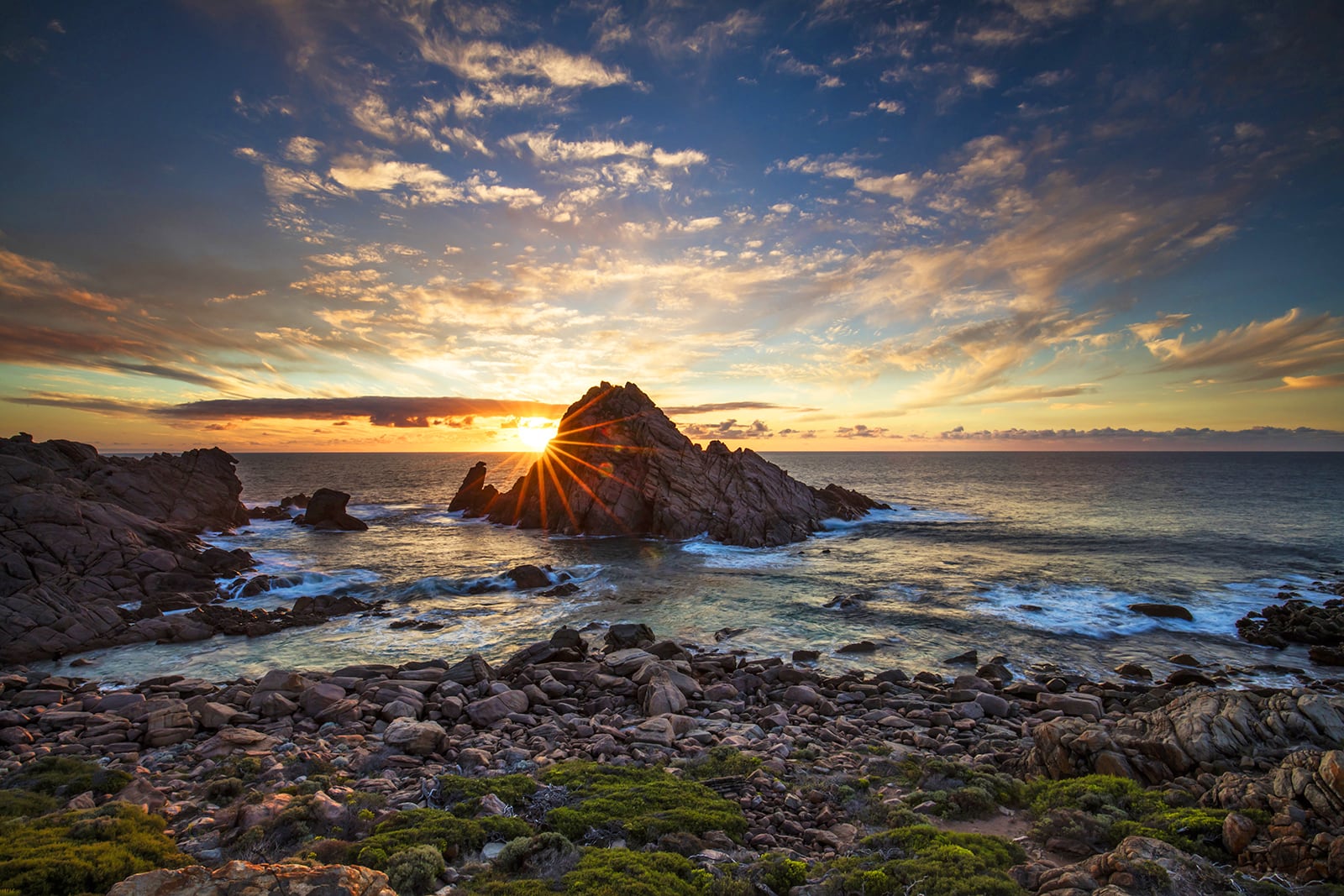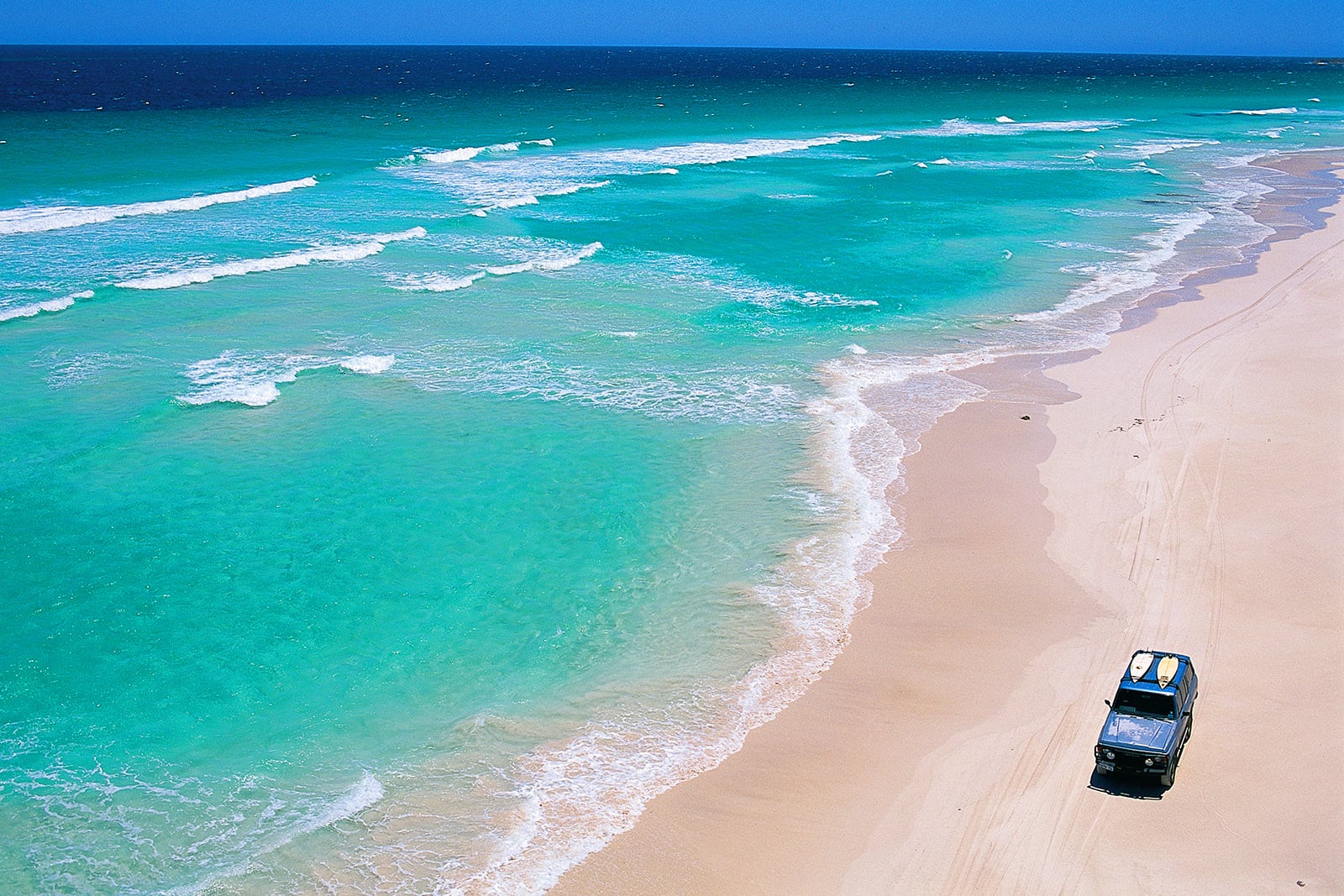
Leeuwin-Naturaliste National Park
Claimed to be the most popular national park in WA, this 19,092-hectare giant justifies its claim to that crown thanks to the shed-load of activities available. Surfing, swimming, diving, hiking (the famous Cape to Cape multi-day hike is located here; more on that later), cycling, touring, camping, fishing and more are all possible here. Add in the epic landscape of pristine coastline abutting the often-ferocious swells of the Indian Ocean, meshed with heavily timbered forest behind the dunes, plus historic homesteads and lighthouses, some amazing caves (thanks to the Leeuwin-Naturaliste ridgeline), and it fills that cliché of something for everyone. To that effect, the park is a long-weekend destination at a minimum. Thanks to its manageable distance from Perth, that just gives you the excuse to return more than once – and you’ll most definitely want to.
The park has four campgrounds – Boranup, Point Road, Conto and Jarrahdene – with all of these being of the first-arrive, best-score type. Point Road has probably the most appeal to those looking for a slightly ‘quieter’ camping experience and is accessed via a 4X4-only track. It is a small campground (it has space for roughly seven tents) sheltered from winds on the edge of the Boranup karri forest, with access to the nearby coastline via Point Road itself. Conto campground, with 116 sites, is ideal for larger groups and those after a bit more space along with some ‘luxuries’, such as a campers’ kitchen, tables, toilets and barbecues. It is located next to Conto Springs Beach. Boranup is another small campground (seven sites only) in the middle of Boranup karri forest, so if you want that bit of solitude (either here or at Point Road) you will need to be quick – especially in summer and school holiday periods – as both these smaller campgrounds fill up fast.
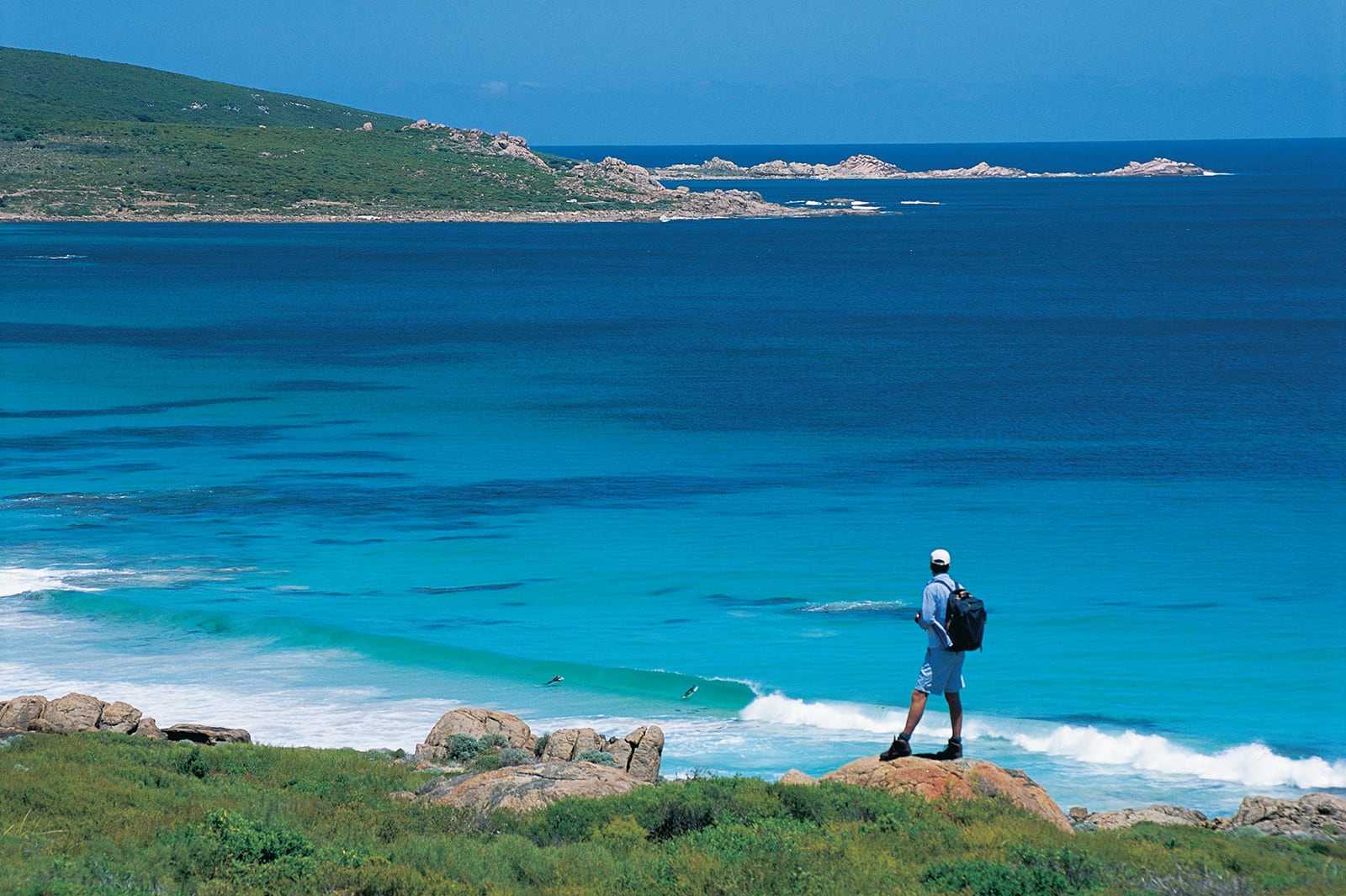
Jarrahdene campground is a schmick new addition to the bush accommodation options in the park. The campground is south of the Margaret River and nestled beside the historic site of the Heritage-listed Jarrahdene Mill, built in 1896 (there are some ruins here to check out). The campground, to date, has 24 camp sites (each with its own table and fire-pit), with five toilet blocks and four sheltered barbecue areas scattered throughout.
The Cape to Cape walking track is rated one of Australia’s best multi-day hiking experiences and, as its name suggests, it travels between Cape Naturaliste Lighthouse in the north and its Cape Leeuwin counterpart in the south (both these are open to visitors). The full distance is 135km, but you can walk a number of the track’s sections as day-walks or even shorter ambles if you wish.
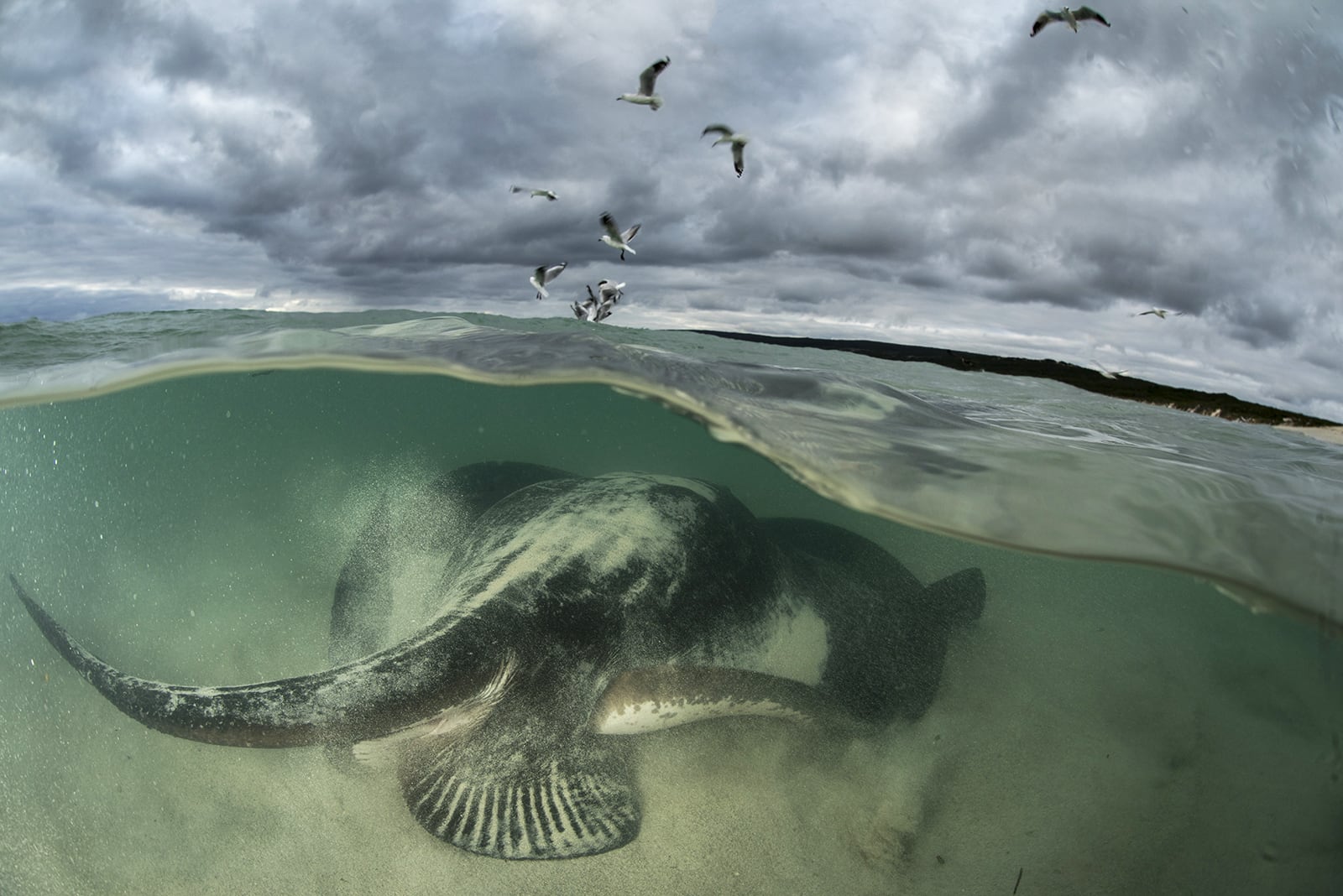
Justin Gilligan/Australian Geographic
For swimming or diving, there are numerous beaches to choose from; the more sheltered Cape Naturaliste and Shelley Cove in the north offer ideal swim spots for families, along with Bunker Bay, located on the northern side of Cape Naturaliste.
Anglers can fish all along the coastline – and off-shore (in your own boat or with a fishing charter company). Expect to (hopefully) catch salmon, snapper, tailor and dhufish – but be aware of bag limits and please only keep what you will eat.
The park contains numerous caves, with visitors able to visit and explore any number of them, including Calgardup and Giants Cave. For those not up to an independent caving experience, you can opt for guided tours of Mammoth Cave and Lake Cave.
So yeah, as you can see, Leeuwin-Naturaliste NP is chockas with stuff to do. Our best advice: tackle a long weekend first in the north, then return a few more times to spend weekends in the south, and then exploring the park hinterland. And then do it all again.
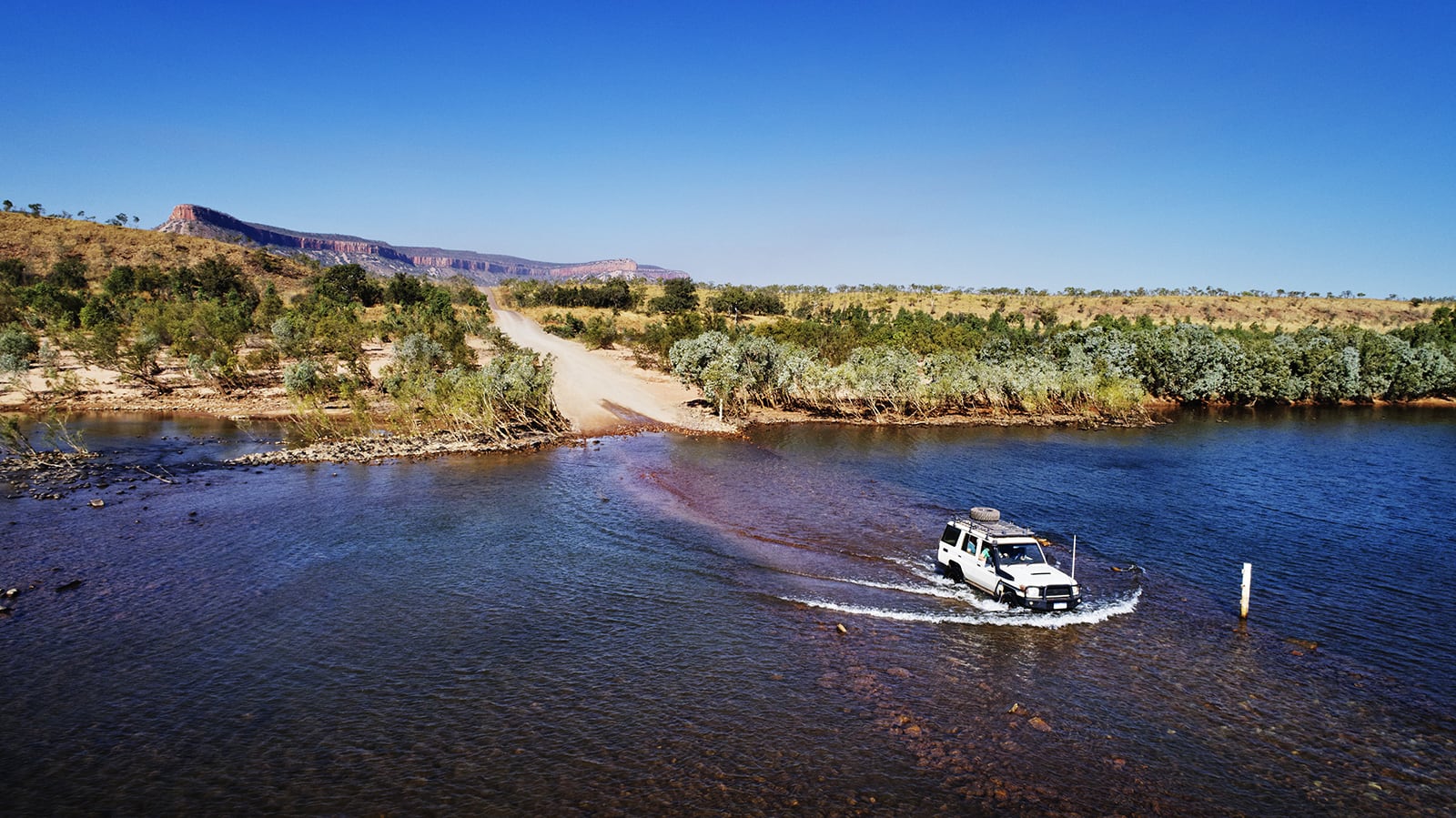
Drive the Gibb River Road
Exploring the Gibb River Road – and getting the most out of the experience – is a matter of time; the more you have, the more memorable the adventure for you and your family/friends. To really do this journey any type of justice, we recommend a minimum of 10 days on the actual GRR itself. If at all possible, though, it is worth extending it to 14 days (or longer) as you drive this iconic route between Kununurra, just west of the NT/WA border and Derby, in north-west WA, on the shores of King Sound. (Note: most folks continue on to the tourist hub of Broome, right on the coast; this town is busy during peak season but is a must-stay.)
The Gibb River Road itself is, to be kind, a relatively mundane drive in terms of any challenges, although not without excitement if you’re travelling it early in the season and the river crossings are high, or the track hasn’t been graded since the previous touring season (usually May through to October). It is best travelled in a 4WD and (preferably) in a diesel variant as there is some considerable distances between fuel outlets (mostly at stations and resorts).
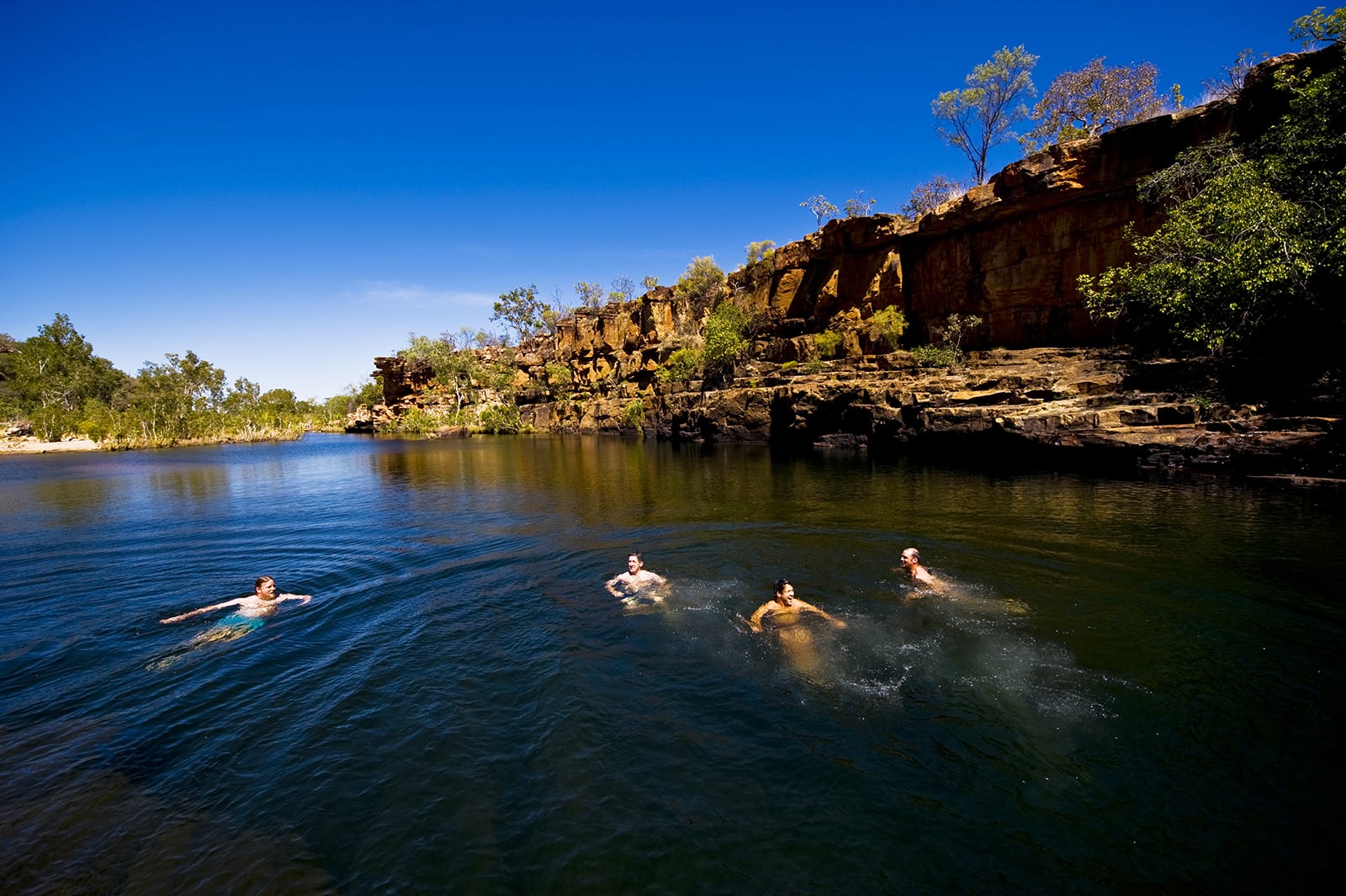
It is the attractions located just off the Gibb River Road that see this off-road jaunt through the Kimberley’s heart sitting near the top of the ‘iconic 4WD adventures’ lists. The many gorges along the road are spectacular – Bell, Windjana, and Emma gorges are just a few examples – and the station stays are brilliant fun. Mt Barnett Roadhouse has a top campground, Home Valley Station has oodles of activities, but it is Mt Elizabeth Station that is the standout for this author, thanks to the sublime Wunnumurra Gorge, reached via a 10km 4X4 track from the station homestead. This gorge is fed from the Barnett River, via a waterfall, and if you swim to the other end of the large pool, you will find some brilliant indigenous rock art. Oh, and speaking of awesome station stays: don’t be put off by El Questro’s pricey reputation – it has a fantastic (and reasonably priced) campsite, some great swimming holes (such as Emma Gorge), loads of 4WD tracks to explore, and some excellent boat and 4WD guided tours.
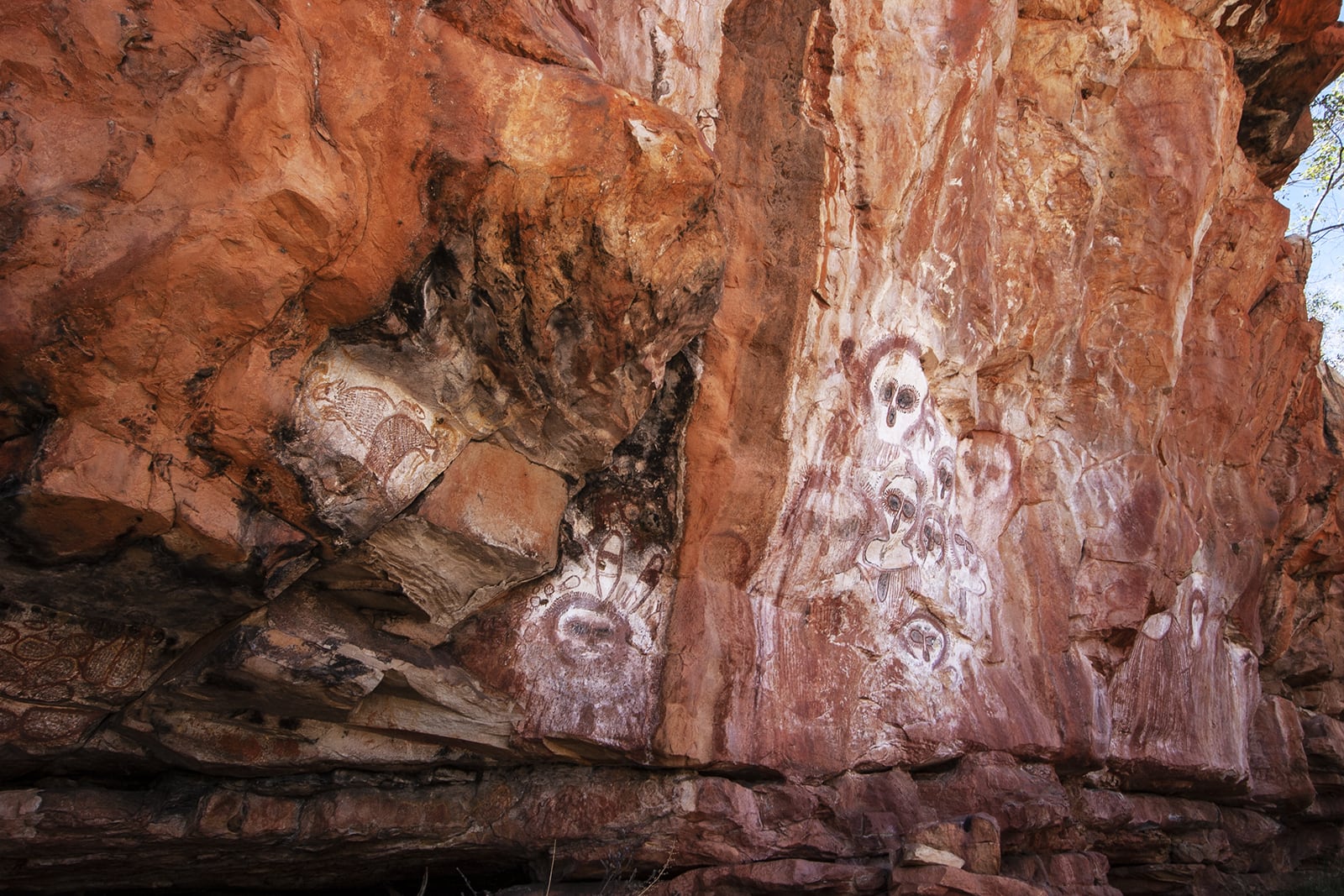
The campground at Bell Gorge can be busy (tour buses often stay here), but it is still worth staying a few days; the swimming here is excellent and there are numerous bushwalking tracks in and around the gorge that make for fantastic short walks.
Some of the side trips worth considering include the epic track to Kalumburu community in the northern Kimberley that allows you to visit Mitchell Falls (an adventure in itself) on the way; a foot-borne exploration of Windjana Gorge (the best location in which to spot the shy freshwater crocodile – the campground here is excellent as well) and nearby Tunnel Creek, where you can retrace the tracks of famous aboriginal bushranger Jandamara; and paddling (canoe, kayak or raft) the Fitzroy River and Dimond Gorge, while ogling the wide variety of native bird- and wildlife at Mornington Wilderness Camp, run by the Australian Wildlife Conservancy.
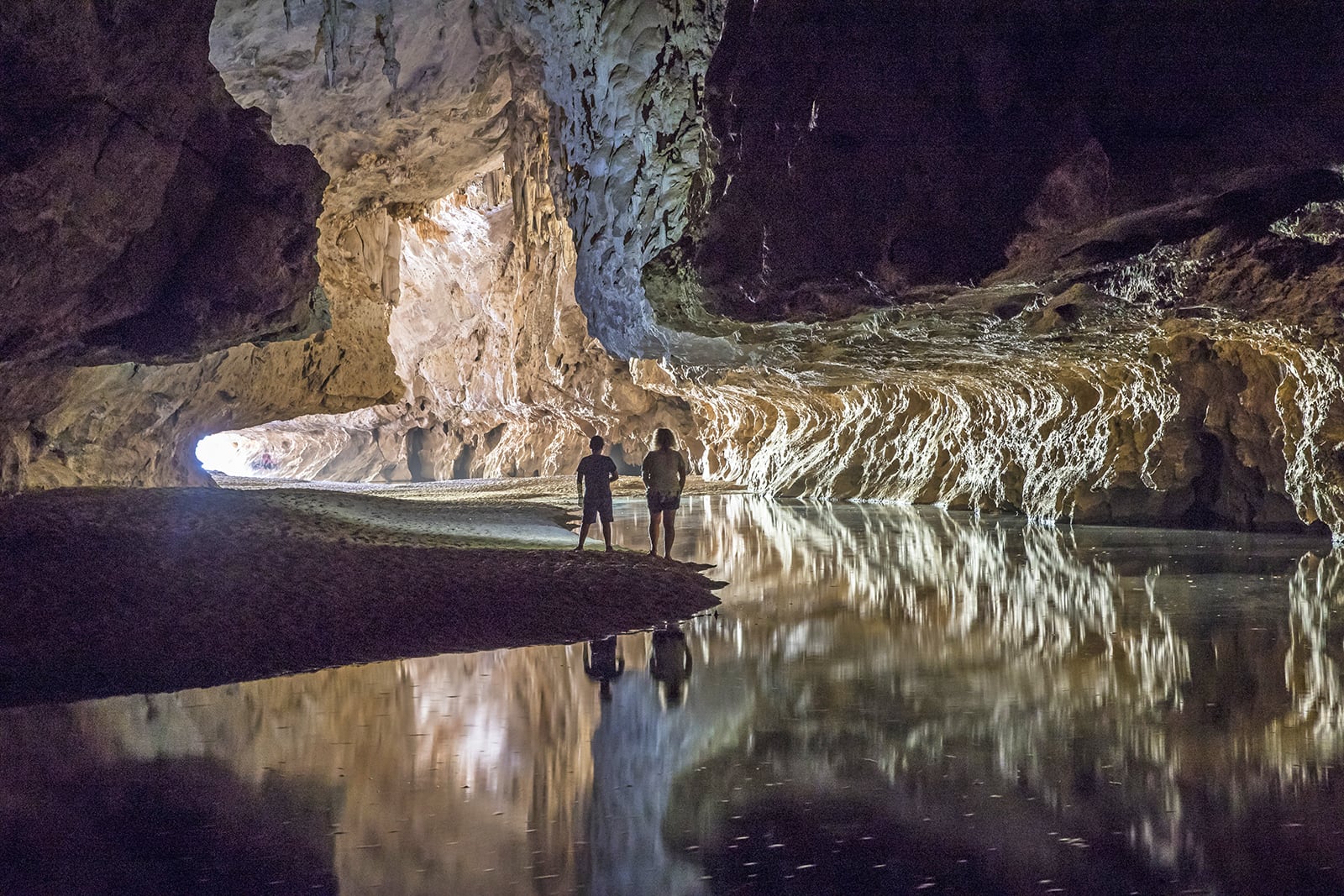
If you’re coming from the eastern seaboard and haven’t got four weeks spare to “do the Gibb” properly (that includes actually getting to the starting point and returning, without rushing), then you’re doing this top-tier destination a disservice. Yep, that’s a lot of time, but the Gibb River Road really is that amazing.
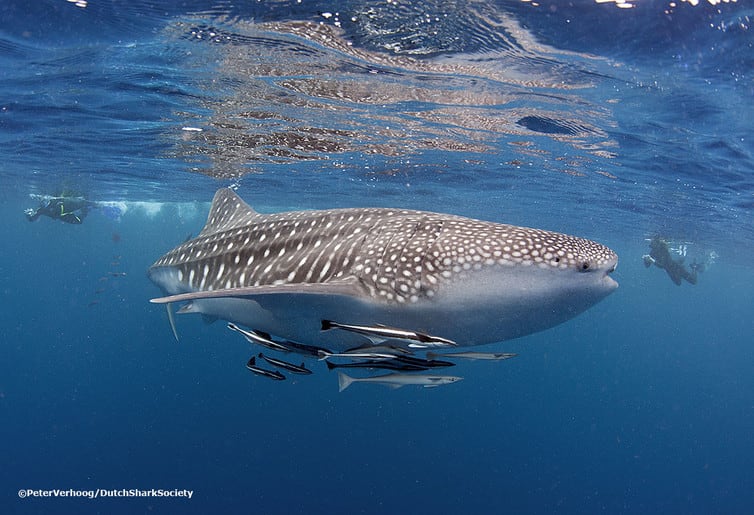
Image credit: Peter Verhoog
Explore the Coral Coast
A mix of desert country and World Heritage-listed marine parks (Ningaloo and Shark Bay) that offers adventure for every outdoors fanatic, whether you’re an avid 4WD tourer, a keen angler, or a water baby. Three hours north of Perth, the Pinnacles Desert is a must-visit, just to walk among the thousands of unique limestone formations that jut from the red sand to the sky.
For marine encounters of the giant kind, you’ll need to fly to Learmonth from Perth, then get ready for the ultimate marine experience: snorkelling on Ningaloo Reef and encounters with the reef’s many (500) species of fish. If you time your visit perfectly (between June and November) you will have the opportunity to dive with the gentle giant of the sea, the whale shark.
The largest of all fishes, the whale shark is also one of the most reclusive, and even here in the Indian Ocean waters off the town of Exmouth, there is only a short timeframe in which to view the plankton-eating behemoths, which can reach lengths of up to 10 metres.
Whale sharks only frequent Ningaloo Reef from around March to early July (there are numerous ‘dive with the whale sharks’ tour operators who are all fully accredited), aligned with the time coral spawning takes place on the reef, which also results in an increase in plankton to the area. Forget the scary connotations around the word ‘shark’, too; the whale shark is strictly a plankton fan, hoovering up its favourite food by filtering it through its (toothless) jaws. Their gentle nature means they take little notice of humans swimming/diving nearby (you are required to stay a minimum of 3 metres from the fish) offering a fantastic marine experience.
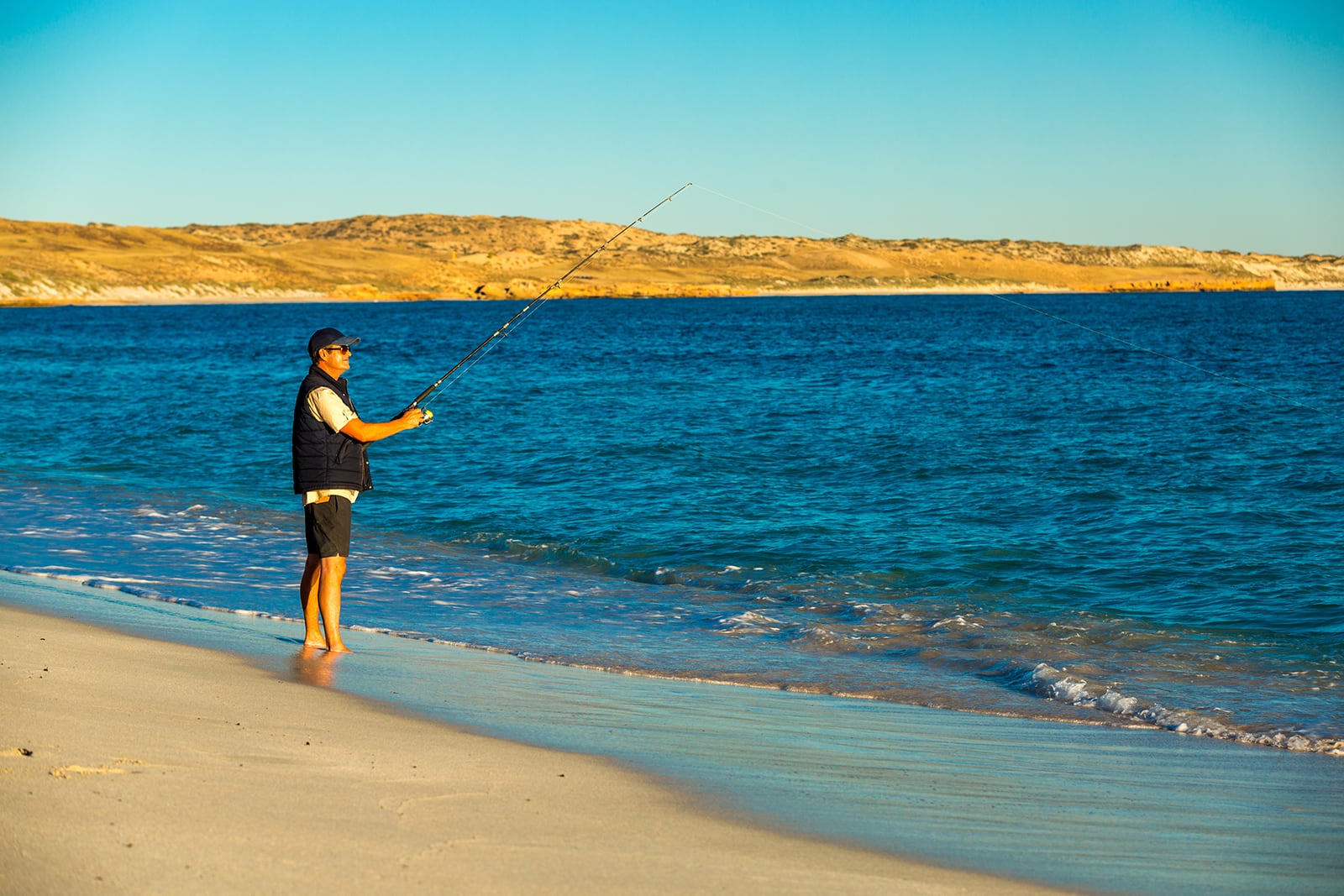
Shark Bay Marine Park’s Dirk Hartog Island National Park also offers plenty for the weekend adventurer with diving, fishing and 4WD-based touring all available. And don’t forget the dolphins of nearby Monkey Mia. Whatever your views on how the human/marine mammal relationship has possibly been skewed here, it’s still a unique experience seeing these gentle creatures up close.
More information
To visit (or camp at) Leeuwin-Naturaliste National Park: See Parks & Wildlife Service Western Australia.
To find info and plan your Gibb River Road adventure across the Kimberley, see Australia’s northwest.
See Hema Maps for the best maps, guidebooks and touring information on the Gibb River Road, the Kimberley, the Pilbara and other regions of WA.
For info on the Coral Coast, see Tourism Western Australia’s Coral Coast online.
See Tourism Western Australia for all things WA.
